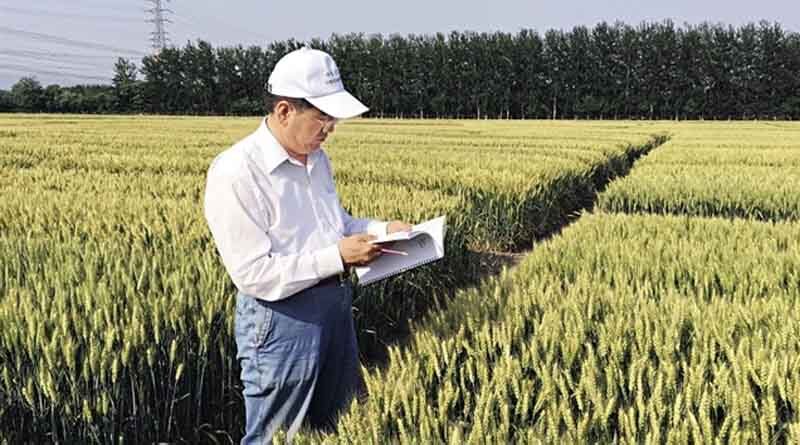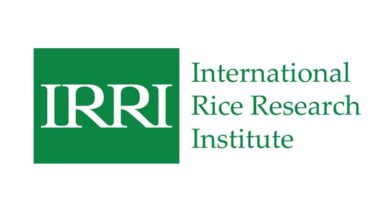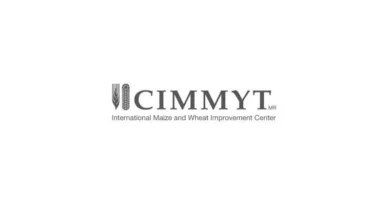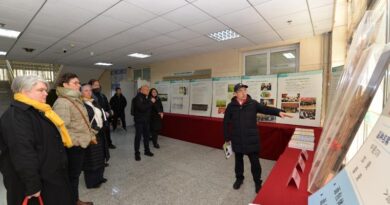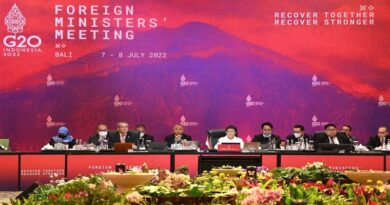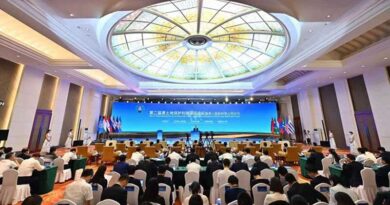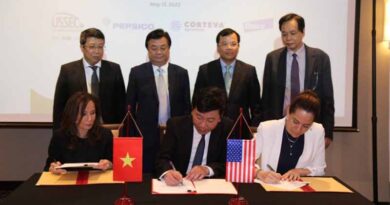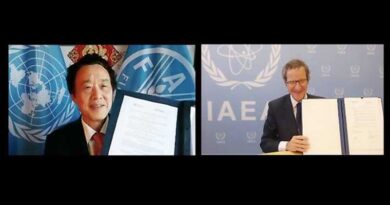A Chinese Wheat Breeder’s International Vision
14 September 2022, China: The Ukraine crisis, coupled with extreme weather phenomena in recent years, has driven up global food prices sharply and a grim food crisis looms large. Food security has thus become a concern for all. In April, when President Xi Jinping visited the Yazhou Bay Seed Laboratory in Sanya in south China, he stressed the importance of sourcing seeds independently to ensuring food security.
How self-reliant is China in growing wheat? He Zhonghu, a research fellow with the Institute of Crop Sciences under the Chinese Academy of Agricultural Sciences (CAAS), and director of the National Wheat Improvement Center has a triumphant answer to that. “Hundred percent self-reliant. All the wheat seeds planted in China have been developed in China,” he told China Today.
He Zhonghu has been working on wheat breeding for more than 30 years. In China, with its large population but relatively scarce arable land, improving wheat quality while ensuring a pretty high yield is the constant pursuit of wheat breeders. But in a world where many are fiercely protective of their technical knowhow, He champions international cooperation. This agricultural scientist’s current dream is to train more people from other developing nations so that China’s achievements in wheat production benefit more countries.
A Long-Cycle Pursuit
Talking about wheat variety breeding, He mentioned an Australian scholar who once gave a lecture at the China Agricultural University in Beijing in the 1980s, when he was a graduate student there. The scholar said, for the first 10 years, you study seed breeding; the next 10 years, you follow others doing the work, still learning; then in the third decade, you can finally start to breed your new varieties. Variety breeding is a long-cycle work, from selecting the seed parents to crossing them, obtaining the specific desired seed progeny, and then promoting the variety, which usually requires a decade.
China is the world’s largest wheat producer, and also the largest consumer. In 2021, China’s wheat yields stood at 137 million tonnes – the seventh year in a row that it surpassed 130 million tonnes. Over the past decade, China’s wheat yields per hectare have increased steadily, from over 4,800 kg in 2011 to over 5,800 kg in 2021, an increase of around 20 percent. The increment owes much to the use of advanced technology in production, resulting in world-leading wheat varieties. China’s wheat consumption in 2021 was 149 million tonnes.
In He’s opinion, China’s progress in wheat breeding in the past decade has been mainly embodied in the increasing yield and improved quality. Another noteworthy progress is the improved drought-tolerance of Chinese wheat varieties under the climate change scenario, He noted. While there has been a persistent drought in north China, the new varieties need to be watered only twice during the whole growth period, reduced from the original three to four times. The wheat variety Zhongmai 175, one of the most widely promoted in north China, can adapt to both irrigated and rainfed fields. It is also very popular in the provinces of Gansu and Qinghai in northwest China, with a yield increase of over 20 percent compared with formerly used varieties. Moreover, the winter wheat variety Zhongmai 175, owing to its outstanding cold resistance, can be planted regularly in the spring wheat region, braving cold weather, which is impossible 20 years ago, according to He. “On the whole, China’s wheat breeding is at a pretty high level, globally speaking, and enjoys a great reputation abroad,” he said.
As climate change continues to impact agriculture, phenomena like crop blights are growing. For example, fusarium head blight, one of the most devastating cereal diseases, occurred only in the Yangze River Delta about 40 years ago. But now it has been found in many provinces in north China, like Hebei, Shandong, and Henan.
Since 2019, He’s team has been promoting the high-quality variety Zhongmai 578, which is not only high-yield but also blight-resistant. In 2020, the variety set a record of producing 1.26 tonnes per hectare. Zhongmai 578 is being promoted via contract production – expanding the farming scale to 10-20 hectares for each farming household or cooperative, He said.
CAAS works as a bridge, connecting farmers, seeds companies, and flour factories to expand the production scale.
“Last year, more than 30,000 hectares of farmland were included into the syndicate. This brought farmers an increased income of roughly over RMB 50 million in total,” He said. The high-quality wheat, according to him, is perfect for bread as well as good for noodles and dumplings, which explains its popularity.
China’s stride in wheat breeding owes much to its opening-up policy, which has encouraged international exchanges and cooperation. The parents of both Zhongmai 175 and Zhongmai 578 can be traced back abroad, respectively to France and Mexico. This is why He emphasizes the importance of international cooperation for a country’s agricultural development.
Cracking the Code
In fact, China is a latecomer in wheat breeding. The United States established its quality testing standard for wheat breeding in the 1940s while China started research only in the mid-1980s. While doing his post-doctoral work at the International Maize and Wheat Improvement Center (CIMMYT) in Mexico in the early 1990s, He became aware of the gap between China and the world leaders in wheat quality testing and studies. “Friends often asked about the quality of China’s noodles. But back then, we didn’t even have a testing method for breeding programs regarding wheat used to make noodles.”
Returning to China in 1993, he started doing wheat quality tests. The Chinese dietary habits are different from those of the West, where bread is the staple food and cookies and cakes popular food items. On Chinese dining tables, noodles, steamed buns, and dumplings are the main staples. Therefore, the Chinese requirements for wheat quality vary. He’s first target was noodles.
His team began to sample and analyze thousands of noodle specimens, finally determining the selection criteria, involving protein quality, color and luster, and starch content. He also introduced the molecular marker technique, and identified the genetic markers that decide the quality of wheat used to make noodles. In this way, China’s wheat testing protocol and molecular breeding method for noodles were established.
Later, He’s team also specified the quality selection criteria of wheat used to make steamed buns and dumplings. Subsequently, an evaluation system for China’s wheat varieties and quality took shape. The genetic markers identified by He’s team are widely used in 22 countries, including the United States and Australia. For the trailblazing work, the team received the First Prize of the State Scientific and Technological Progress Awards in 2008.
Besides ensuring a sufficient wheat supply, another important pursuit for He’s team is to improve the food quality in China. Visiting farmers and food processing factories is a key part of his team’s work. In this way they learn about the market demands and carry out studies to cope with adversities like blight and climate change. Combining modern biological technology and conventional breeding, they have succeeded in breeding 26 new wheat varieties with high yields and improved quality. He and his team received the Shen Nong China Agricultural Science and Technology Award in 2017 for breeding the Zhongmai 175 variety and spearheading its application. It is the most comprehensive state-approved agricultural science and technology award for the national agricultural industry.
Dedicated to International Cooperation
He has another important identity – he has been director of CIMMYT China Office since its inception in 1997. CIMMYT, a non-profit research and training organization, was established in 1966 to contribute to global food security by serving developing countries, and hosts the world’s largest maize and wheat genebank at its headquarters in Mexico.
From CIMMYT, He has introduced 20,000 samples of wheat seed sources to over 25 institutions in China and based on them, more than 80 new wheat varieties have been bred, including blight-resistant ones. The new varieties have been planted in more than one million hectares across China. The program, “Introduction, Research and Innovative Application of CIMMYT Wheat Varieties,” won a prize at the State Scientific and Technological Progress Awards in 2015. For his outstanding achievements, He was also granted the title “CIMMYT Distinguished Scientist” by the international organization in 2012.
He Zhonghu tends to speak lightly of his contribution to the progress in wheat breeding. He thinks he has simply done what a Chinese agricultural scientist is expected to do. For him, his most proud accomplishment is that he has trained many young scientists from both China and abroad. “After decades of international cooperation through CIMMYT, I’ve become deeply aware of the importance of talent cultivation in an international environment. Young people need an international vision. It enables them to keep abreast of the most advanced technologies as well as carry out international cooperation in the future through global ties. All countries benefit from international cooperation.”
He has sent more than 150 Chinese students and scientists to study abroad through CIMMYT and other international cooperative programs. Meanwhile, through Chinese scholarships, he has trained many young scientists from developing nations. “In the past, China benefited greatly from international cooperation. Now it’s our turn to give back,” he said.
He is now planning personnel training programs with countries in Africa and South Asia. “Chinese wheat varieties have many merits. They are high-yield and blight-resistant, which would be valuable for developing countries. In addition, China’s agricultural machinery is handy, effective, and reasonably priced. That would also benefit these countries.” In recent years, the Chinese government has instituted many scholarships for students from other developing countries and he wants to leverage the policy to train more international students.
The CIMMYT China Office now focuses on the impact of climate change on wheat production. “The impact is far beyond our imagination. For example, new crop blights have appeared in some regions, and extreme weather has shown its great impact on wheat production,” He Zhonghu enumerated. He says international cooperation would be a good way to address that problem effectively.
He also shares one of his cherished memories about Haldore Hanson, a former director of CIMMYT and, also a distinguished American war correspondent who interviewed Mao Zedong in Yan’an in 1938.
“When I was doing my post-doctorate at CIMMYT, Hanson had retired. But whenever he learned a Chinese visited CIMMYT, he would invite the Chinese home for dinner and talked about changes in China. He had a special bond with China.” Hanson, who devoted much of his life to global food security, including donating his residence to CIMMYT, greatly inspired He and sowed the seeds of international cooperation in He’s mind.
China’s international exchanges in agriculture continue to expand as more and more Chinese go abroad and more and more foreigners come to China, nurturing commendable international friendship. This spirit of international cooperation is particularly invaluable in today’s turbulent global political landscape. Global issues like food security and climate change are sounding a clarion call for countries to put aside their differences and collaborate to crack the common challenges.
Also Read: Tractor sale in India lowest in two months; 32 percent down in August 2022
(For Latest Agriculture News & Updates, follow Krishak Jagat on Google News)

